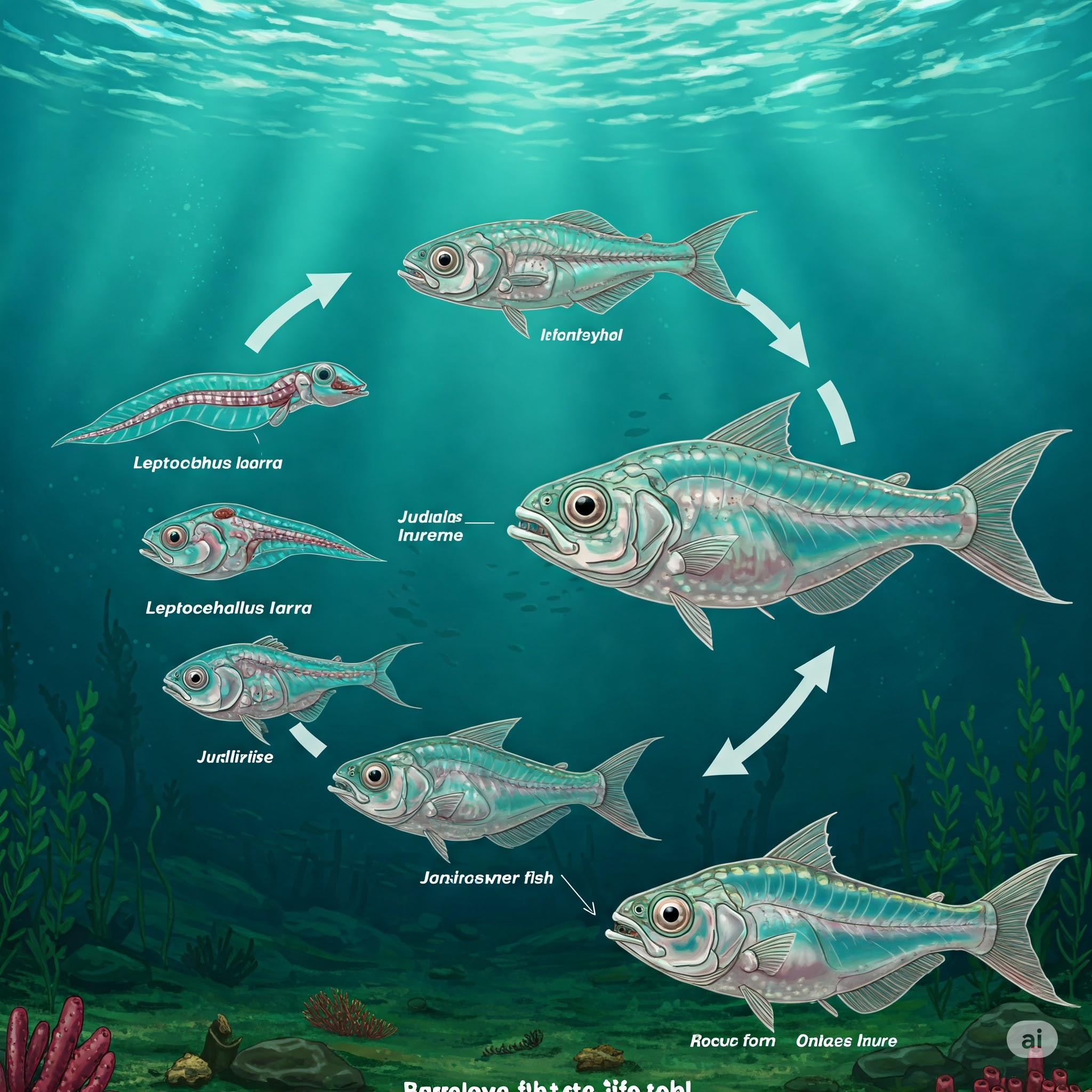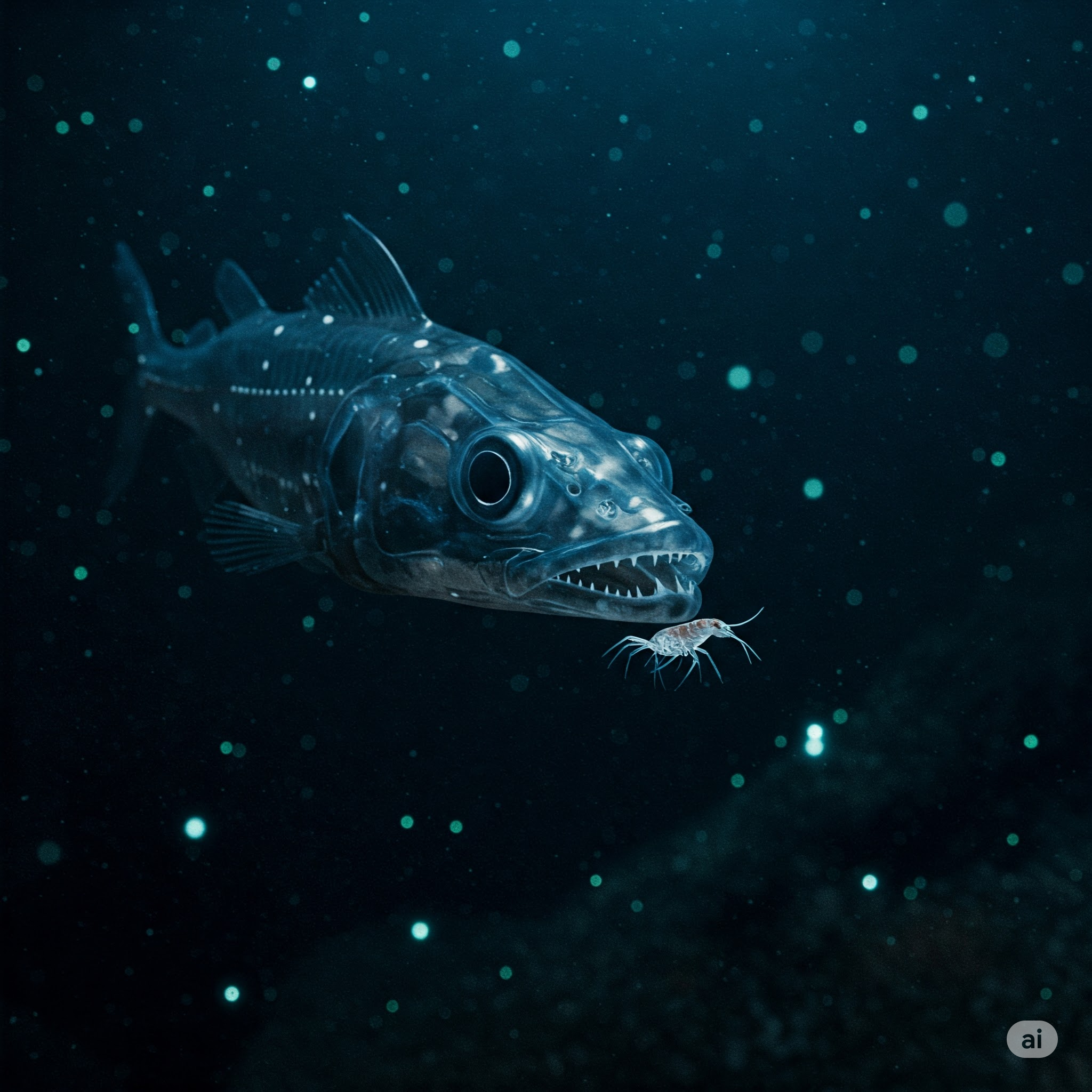The Barreleye Fish is a species of bony fish rarely observed in deep-sea ecosystems, notable for its highly distinctive biological features. Known for its transparent head and uniquely light-sensitive eyes, this fish serves as a remarkable example in modern marine biology research regarding visual adaptations and deep-sea environmental adaptation. Often classified among deep-water dwelling species, the Barreleye plays a significant role in understanding deep-sea biota through its morphological and behavioral characteristics. With its uniquely evolved anatomical structures, the species has drawn scientific attention in terms of both the evolution of visual systems and predation strategies. The classification, physiological structure, habitat, and behavioral traits of the Barreleye fish have been studied in detail in modern zoological and marine biological literature.
Classification and Morphological Features
Taxonomic Position
Barreleye fishes belong to the class Actinopterygii (ray-finned fishes) and the family Opisthoproctidae. While the family contains several species from different genera, the most well-known is Macropinna microstoma. This species was first described by Chapman in 1939 and has since been a significant subject of discussion in the field of systematic biology, particularly due to its morphological features.
Physical Structure
Barreleye fishes are generally small, reaching up to about 15 cm in length. One of their most striking features is the head, which is covered by a transparent, fluid-filled dome. This dome not only protects the eyes but also allows light to enter. Inside the dome, the eyes are tube-shaped and oriented upwards. This anatomical feature allows the fish to detect silhouettes from above, identifying potential prey. Thanks to their ability to redirect their gaze, the fish can see both upwards and forwards—an important adaptation for locating prey in the low-light conditions of the deep sea.
The skin is dark-colored, and the muscle structure is quite weak. The body is laterally compressed, and the fish lacks a swim bladder. Instead, it has a jelly-like structure that provides neutral buoyancy. This structure has evolved to conserve energy in the high-pressure environment of the deep sea.
Internal Structures and Physiological Features
The digestive and circulatory systems of the Barreleye fish share similarities with other deep-sea fish. In particular, the digestive system is adapted to consume small planktonic organisms and gelatinous creatures. The jaw structure is relatively small but highly flexible. This structure is not meant for swallowing large prey but rather for efficiently consuming soft-bodied organisms of specific volumes.
The retina in the eyes contains a high concentration of rod cells, allowing for maximum vision in low-light environments. Due to their tubular structure, the eye lenses have a high optical density, which effectively refracts light.
Habitat and Geographical Distribution
Habitat Characteristics
Barreleye fishes typically inhabit depths ranging between 600 and 800 meters. However, observations indicate that some species can be found at depths between 400 and 2,500 meters. This range corresponds to the mesopelagic and bathypelagic zones of the oceans. These areas are characterized by minimal sunlight penetration, low temperatures, and high pressure.
The main features of their habitat include low temperatures (generally around 4 °C), low oxygen levels, and limited food resources. The Barreleye has evolved specifically to adapt to these conditions. Its body has developed biochemical pathways that minimize energy use.
Geographical Distribution
Barreleye fishes are predominantly distributed in the northern parts of the Pacific Ocean. The most common sightings are in areas such as the Bering Sea, the coasts of Japan, the waters off California, and around Hawaii. Rare instances have been reported in the Atlantic Ocean, but due to limited observations in these regions, it is not clear whether the species has permanent populations in the Atlantic.
Because their habitats are located in hard-to-reach areas, observational data on the behavior and ecology of this species are limited. However, technologies like ROVs (remotely operated underwater vehicles) used in deep-sea research have made it possible to observe the Barreleye species more frequently.

Barreleye Fish Life Cycle (Created by Artificial Intelligence)
Behavioral and Feeding Characteristics
Visual Perception and Prey Detection
Barreleye fishes possess a visual system that is highly specialized for detecting prey in the dimly lit conditions of the deep-sea environment. Their upward-facing eyes allow them to perceive the silhouettes of prey swimming above. Additionally, the rotatable structure of their eyes grants them the ability to track a fixed point. This enables a responsive reaction to the movement of planktonic organisms or deep-sea jellies.
Some observations have revealed that Barreleye fish can rotate their eyes forward to change their field of view. This adaptation may have evolved to enhance image quality based on the angle of incoming light and to minimize optical illusions.
Feeding Strategies
Barreleye fishes typically adopt a passive hunting strategy. To maintain energy efficiency, this species avoids active hunting and can remain motionless until the prey comes into direct contact or within very close proximity. Their diet mainly consists of gelatinous planktonic organisms, jellyfish larvae, and small crustaceans.
Some studies have shown that Barreleye fishes tend to congregate around colonial organisms from the order Siphonophorae. These colonial organisms usually produce light to attract their own prey, and Barreleye fishes are drawn to this light, thereby increasing their hunting opportunities. This behavior is regarded as a bioluminescence-supported version of passive hunting.
Reproduction and Development
There is no direct observational data regarding the reproductive behaviors of Barreleye fishes. However, genetic analyses and morphological similarities suggest that this species reproduces through external fertilization. The fertilized eggs develop at shallower depths during their planktonic phase. In the larval stage, their body structure is transparent, and the eye structures typical of adult individuals have not yet developed.
During development, it may take several weeks for the eyes to rotate upward and for the dome structure to form. Throughout this process, the larvae complete their photosensitive development in environments with higher light availability and subsequently return to the deeper ocean layers.

Fishing for Barreleye Fish (Created by Artificial Intelligence)
Ecological Role and Evolutionary Significance
Place in the Ecosystem
Barreleye fishes serve as intermediate consumers in the food chains of the deep ocean layers. By primarily feeding on planktonic organisms, they become a potential food source for higher-level predators. Moreover, their relatively long lifespan, enabled by low energy consumption, allows them to maintain a stable structure for energy transfer within the ecosystem.
These fish play a critical role in the understanding of deep-sea ecology, particularly due to their interactions with bioluminescent organisms. Observations of Barreleye behavior have supported various functions of bioluminescence, including predator avoidance, prey attraction, and intra-species communication.
Evolutionary Adaptations
The most notable adaptation developed by Barreleye fish during their evolutionary process is the upward-facing orientation of their eyes, enclosed within a transparent dome. This trait is considered an evolutionary innovation, providing a selective advantage for visual prey detection in deep-sea environments. Furthermore, their low muscle density and gelatinous body structure help minimize energy expenditure.
Although fossil evidence is limited, molecular phylogenetic studies suggest that Barreleye species diverged from other ray-finned fishes approximately 20 to 30 million years ago. This divergence is believed to coincide with a rapid evolutionary transformation in eye structure, accompanying the transition to a deep-sea habitat.
Scientific Relevance
Barreleye fish have been regarded as model organisms in studies focusing on deep-sea optical adaptations and the evolution of visual systems. Research employing modern imaging techniques has revealed important findings regarding lens optics, light transmission, and retinal cell arrangement. Genetic analyses of this species have also provided insights into the evolution of opsin proteins.


